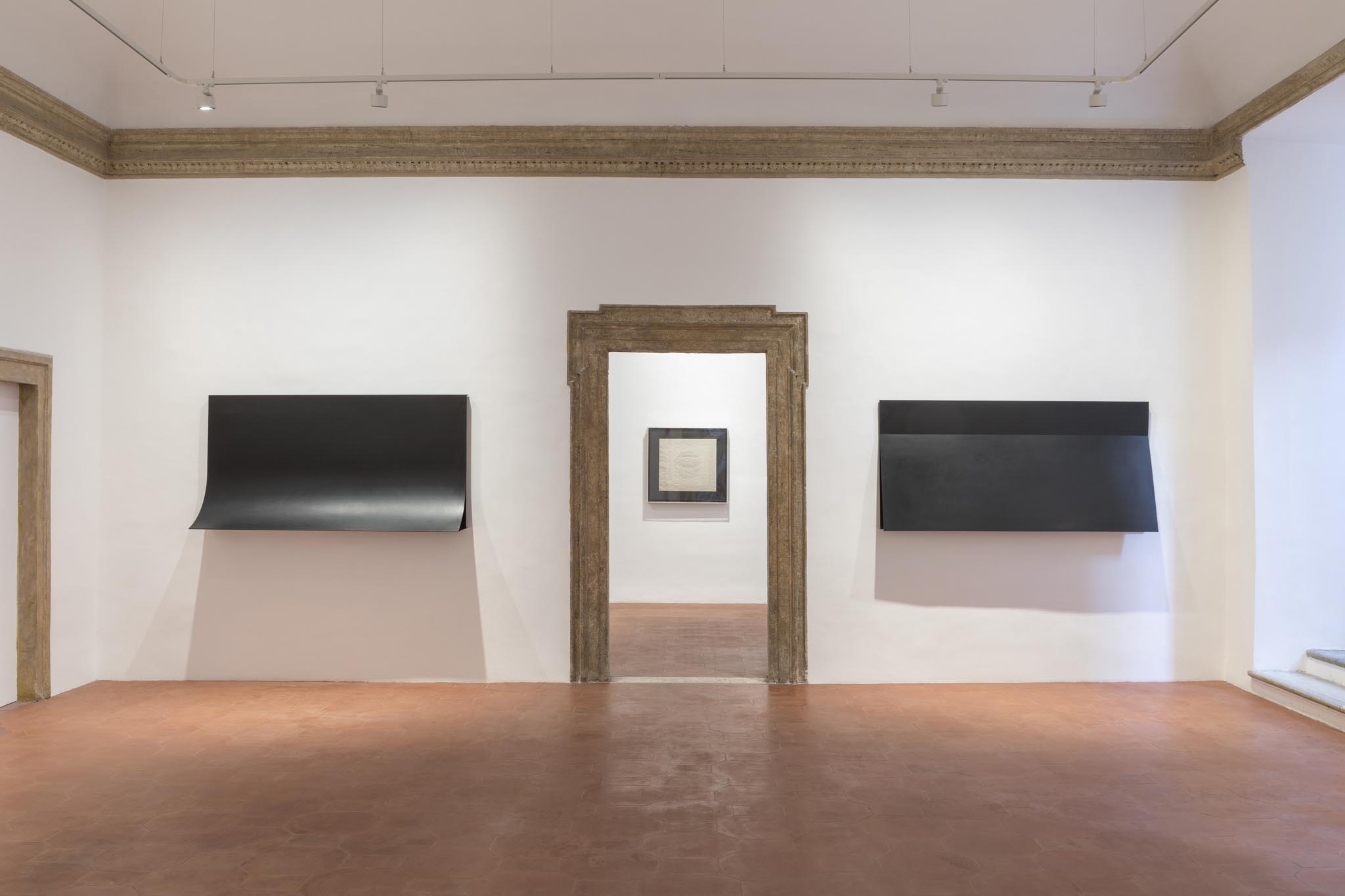Francesco Lo Savio was one of the most problematic personalities of the Italian postinformal avant-garde, recognized alongside Piero Manzoni as one of the central figures in the European renaissance of Italian art. Lo Savio was an artist ahead of his time, and his work received recognition soon after his death at the age of 28 in Marseille, where the young man took his own life by throwing himself from a balcony of the Unité d’Habitation by Le Corbusier.
Yet, Lo Savio is also the artist who was best able to chronicle the transition from the 1950s to the 1960s, a period characterized by a fervent modernist pursuit of utopian regeneration of the world. Indeed, his practice, freed from any formal concept, eschews representation and signification to become an absolute and universal experience.
Lo Savio made his debut in 1958 at the Premio Cinecittà. This group exhibition organized by the Italian Communist Party gathered other important names of the art milieu of the time such as: Mario Schifano, Sergio Lombardo, Renato Mambor and his brother Tano Festa. He soon abandoned these early experiences close to the informal lexicon. in 1959 he devoted himself to SpazioLuce, monochrome paintings on canvas allowing to analyze the energetic possibilities of color. The very slight luministic variation of color of these works generate an arc of spatial-luminous effects that expand into the environment from the two-dimensional pictorial surface. Thanks to his friendship with Toti Scialoja, Lo Savio was welcomed in 1960 at La Salita Gallery in Rome. That same year, his first solo exhibition was held at Galleria Selecta in Rome and Galleria Il Cancello in Bologna included him in a group show curated by Emilio Villa.
International exhibitions of the artist’s works began in 1961 but were not well received and created frustrations in the young man. In 1963, his first and only book, Spazio luce: evoluzione di un’idea was printed. It was published again in 1975 and curated by Germano Celant. The text was dedicated “to the memory of Piet Mondrian” and edited in every detail by the artist. It indicated the intent of Lo Savio’s artistic practice, starting from contemporary architectural studies connoted by strong ideological and social interests and combining the influences of Bauhaus, Suprematism, Mondrian and De Stijl. The artistic oeuvre of Francesco Lo Savio, defined by geometric precision and elemental hues, serves as a dynamic force, pulsating with energy. To truly appreciate his creations, one must encounter them in person, confronting, contemplating, and immersing oneself in their profound spiritual resonance.
Lo Savio’s artistic journey unfolds through distinct cycles of works Spazio-Luce, Filtri, Metalli, Articolazioni Totali, each representing a progression in his exploration on the dialogue between the works, the space and the light. A few plans and a model for the Maison au soleil, an architectural transposition of his artistic thought, survived.
Through the additional action of various semitransparent surfaces with the geometric shapes of circle and square, Lo Savio created a motion of chromatic depowering within the Filtri, which in turn generates the dynamic of light absorption he sought. Light absorption that becomes even more evident in the series Metalli, made since 1960, due to their matte surface treatment. With these works Lo Savio stepped outside the restrictive limits of the pictorial rectangle, making direct contact with the environment and emphasizing their spatiality. In one of his notes he wrote, “the human being is the only example of structural perfection and maximum static freedom with variable balance.” Therefore, his research had to come to the construction of a core that included him, the Articolazioni Totali, concrete structures crossed by metal plates in total dialogue with space and light.
The rediscovery of Lo Savio’s work, as mentioned above, came after the artist’s death. In 1968, some of his works were included in Documenta IV in Kassel, in 1972 others were included in the XXXVI Venice Biennale. He was also presented in the exhibition Cento opere d’arte italiana dal Futurismo a oggi of the National Gallery of Modern and Contemporary Art in Rome (1969) and in Linee della ricerca contemporanea of the XXXIV International Art Exhibition. In 1979, he opened a first major retrospective exhibition, curated by Germano Celant at the Padiglione d’Arte Contemporanea (PAC) in Milan. On this occasion, works from 1958 to 1963 were collected for the first time: Dipinti, Metalli, Filtri, Articolazioni. These works marked the transition from logical painting to minimal and conceptual sculpture, along with architectural and urban projects. Other retrospectives were dedicated to him in 2009 by the Museo Nacional Centro de Arte Reina Sofia, and in 2018 by Galleria Mattia De Luca and the Museo d’Arte Moderna e Contemporanea di Trento e Rovereto.
Francesco Lo Savio’s works now belong to several Italian collections, such as the Galleria Civica d’Arte Moderna e Contemporanea (GAM) in Turin, the Galleria d’Arte Moderna e Contemporanea in Rome, the Fondazione Biscozzi Rimbaud in Lecce, the Fondazione Prada in Milan, the Museo MADRE in Naples, and the Roberto Casamonti Collection in Florence.
